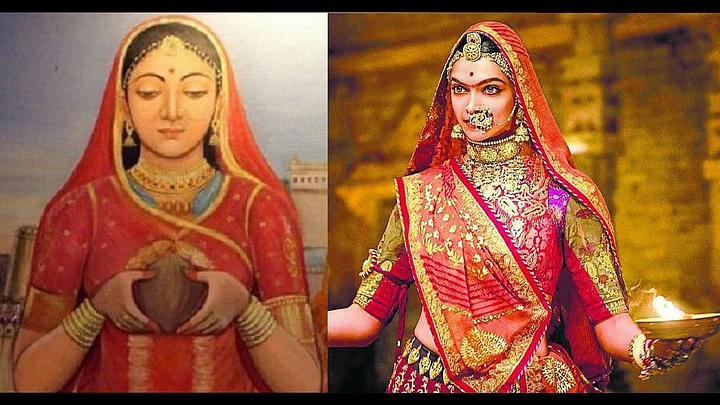While the debate and discussion over the portrayal of Rani Padmavati and Alauddin Khilji in Sanjay Leela Bhansali’s Padmaavat rages on, noted Medieval India historian Harbans Mukhia has an interesting take on how the nuance of the story of Rani Padmini has changed over centuries.
Prof Mukhia believes that the tale began in Malik Muhammad Jayasi’s Padmavat as a sufi interpretation of the tussle between man and God.
1. Man vs God
“In sufism there is the notion that God is the beloved and man is the lover and man can never find the beloved because if you find the beloved then you have reached your spiritual culmination. Man hankers after God, like a sufi soul hankers after the beloved - - that’s always the metaphor - that’s what Jayasi does in his poem, Rani Padmavati is the beloved who is God, and Khilji is man who is hankering after her. It’s not about Hindu vs Muslim or conqueror vs conquered.”Prof Habans Mukhia
2. Conquerer vs Conquered
“In later centuries, the Rajasthani ballads portrayed the story of Rani Padmavati as a conquered vs conquerer tale. A historian of Jahangir’s time called Farishta - brings in Padmavat into recorded history from a fictional poem. That’s how Jayasi’s story becomes incorporated into the historical narrative of the early 17th century. But it remains a tale of brave Rajputs fighting to save their honour, and a queen sacrificing her life to save herself from a conquerer.”Prof Habans Mukhia
3. Lustful Muslim Invader vs Hindu Queen
“James Tod, an officer under the British East India Company and an oriental scholar narrates the story of Rani Padmini in his book ‘Annals and Antiquities of Rajasthan’ and turns it into a lustful Muslim Invader vs Hindu Queen kind of tale from a colonial perspective.”Prof Habans Mukhia
4. Foreign Muslim Ruler vs Native Hindu Woman
“19th century Bengali literature is full of these allusions to Muslims as foreigners. Bankim Chandra Chatterjee was an employee of the East India Company, but he was a nationalist, so he was targeting the British ruler but he couldn’t write directly about them. So he used the metaphor of Muslims for the British, because both of them were foreigners for him and therefore by attacking one foreigner he was attacking the other too.”Prof Habans Mukhia
ADVERTISEMENTREMOVE AD
Prof Mukhia, who admittedly isn’t a film buff, hasn’t seen filmmaker Sanjay Leela Bhansali’s Padmaavat and swears that he will never see it. He just saved himself from having to go through yet another interpretation of Jayasi’s poem on Rani Padmini.
Read Latest News and Breaking News at The Quint, browse for more from entertainment
Published:
